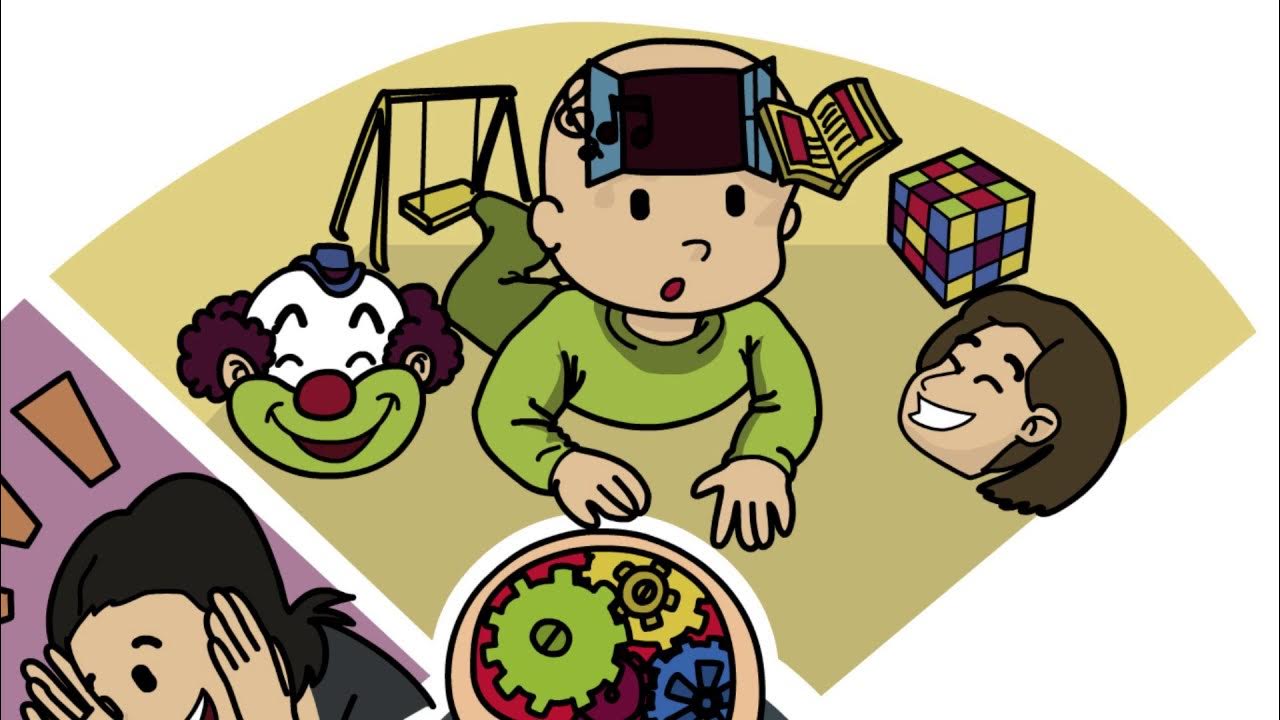Molly Wright: How every child can thrive by five | TED
Summary
TLDRIn this inspiring talk, seven-year-old Molly enlightens the audience on the critical impact of early childhood experiences on brain development. She emphasizes the first five years as a pivotal period, highlighting the importance of connection, communication, play, a healthy home, and community. Molly illustrates how simple activities like peekaboo and naming games foster memory, trust, and vocabulary, urging adults to engage in 'serve and return' interactions to shape children's futures and mental health.
Takeaways
- 🌟 The first five years of a child's life are crucial for their health and development, particularly their brain development.
- 👶 A baby's brain grows rapidly in the first year, nearly doubling in size, and by age seven, it's almost 90 percent the volume of an adult brain.
- 💡 The brain can create up to one million neural connections every second during early childhood, emphasizing the importance of nurturing this period.
- 🤝 The top five things for a child's healthy development are connecting, talking, playing, having a healthy home, and community support.
- 💬 'Serve and return' interactions, which involve adults connecting, talking, and playing with children, are vital for their mental and emotional well-being.
- 🎲 Games like peekaboo, naming games, and copycat games are not just fun; they build memory, trust, vocabulary, attention, and empathy in children.
- 😄 Laughter and play are essential for building and strengthening relationships, as well as teaching important life skills.
- 🚫 The lack of meaningful connections and interactions can cause confusion and stress in children, highlighting the need for consistent engagement.
- 👨👧👦 Positive relationships with adults provide children with the confidence to explore, learn, and grow.
- 🕒 The most impactful actions for a child's development should start early and occur frequently throughout their early years.
- 🌍 The collective effort of connecting, talking, and playing with children everywhere has the potential to make a significant difference in their futures.
Q & A
What is the main theme of Molly's talk?
-The main theme of Molly's talk is the importance of early childhood development, particularly during the first five years, and how interactions with adults can shape a child's brain and future.
Who are the characters introduced in the script?
-The characters introduced are Molly, a seven-year-old girl; Ari, Molly's little friend; and Amarjot, Ari's father and neighbor, who is involved in the experiment.
What does Molly suggest is the most crucial period for a child's development?
-Molly suggests that the most crucial period for a child's development is the first five years of life, starting from when they are in their mother's womb.
What is the 'blue bag' in the script symbolic of?
-The 'blue bag' is symbolic of the size and weight of a healthy baby's brain at birth.
How does Molly describe the growth of a baby's brain in the first year?
-Molly describes the growth of a baby's brain in the first year as almost doubling in volume, as represented by the 'red bag'.
What are the 'top five things' Molly mentions as crucial for a child's healthy development?
-The 'top five things' Molly mentions are connecting, talking, playing, having a healthy home, and being part of a community.
What is the term 'serve and return' referring to in the context of the script?
-In the context of the script, 'serve and return' refers to the interaction between adults and children, which involves connecting, talking, and playing with them.
What types of games does Molly mention as beneficial for a child's development?
-Molly mentions copycat games for building imagination and empathy, naming games for building vocabulary and attention, and peekaboo for building memory and trust.
How does Molly demonstrate the negative impact of a lack of connection on a child?
-Molly demonstrates the negative impact by showing Ari's reaction when Amarjot, his father, stops interacting with him, causing Ari confusion and stress.
What is the significance of the phrase 'early and often' in Molly's talk?
-The phrase 'early and often' emphasizes the importance of starting interactions with children as early as possible and continuing them regularly to foster their development.
What is the final message Molly conveys to the audience about the impact of their actions?
-Molly's final message is that every moment spent connecting, talking, and playing with children is an opportunity to shape their future, and that these actions are not just games but are fundamental to the children's development and future.
Outlines

Dieser Bereich ist nur für Premium-Benutzer verfügbar. Bitte führen Sie ein Upgrade durch, um auf diesen Abschnitt zuzugreifen.
Upgrade durchführenMindmap

Dieser Bereich ist nur für Premium-Benutzer verfügbar. Bitte führen Sie ein Upgrade durch, um auf diesen Abschnitt zuzugreifen.
Upgrade durchführenKeywords

Dieser Bereich ist nur für Premium-Benutzer verfügbar. Bitte führen Sie ein Upgrade durch, um auf diesen Abschnitt zuzugreifen.
Upgrade durchführenHighlights

Dieser Bereich ist nur für Premium-Benutzer verfügbar. Bitte führen Sie ein Upgrade durch, um auf diesen Abschnitt zuzugreifen.
Upgrade durchführenTranscripts

Dieser Bereich ist nur für Premium-Benutzer verfügbar. Bitte führen Sie ein Upgrade durch, um auf diesen Abschnitt zuzugreifen.
Upgrade durchführenWeitere ähnliche Videos ansehen

Early in Life & the Importance of Early Childhood Education | Steve Zwolak | TEDxDelmarLoopED

Conceito & Ação - entrevista com a Dra. Carla Gikovate - Parte 1/2

InBrief: The Science of Early Childhood Development

The Science of Early Childhood Development

O NEURODESENVOLVIMENTO INFANTIL

Preventing Adverse Childhood Experiences (ACEs) Online Training Module 1 Lesson 1
5.0 / 5 (0 votes)
